#Myths and Truths [Jenny]
Text
What a wonderful day for a Howl
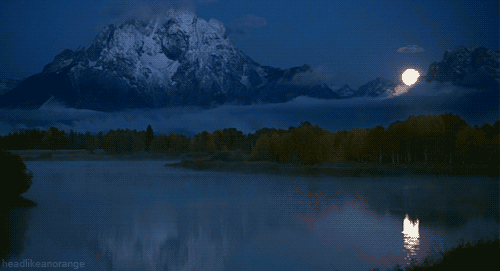

Selective, semi-private RP blog featuring werewolves, gods, and other magical creatures.
Main Muses: Jasper, Asher, Cobalt, Robin, Anubis, Ra, Seth, Tristin
#Looking from the peak [Dash Com]#Werewolves HC#Werewolf#Werewolves#Seductive howling [NSFW]#Howling for the Train [Jasper]#Young and happy [Asher]#God can't forgive a beast [Father John]#Soft voices soft paws [Cinder]#A wise Wolf once said... [Shirou]#Death is sad; family is sorrowful [Cobalt]#The weights tell all [Anubis; God of the Underworld]#Boss of the Sun [Ra]#Thunder and Chaos [Seth; the forgotten brother]#History and Magic [Robin]#Myths and Truths [Jenny]#A howling tale [Story]#A loyal Bird [Helios; a winged fighter]#The First and the Loyal [Jacob Ashwolf]#Corrupted Family [Jonathan Ashwolf]#Myths are real [Tristin]#A Collective Solution [Lyall; Commander]
13 notes
·
View notes
Text
me when I see a post I disagree with on tumblr dot com but I don’t wanna reblog it because it’s really just someone expressing their opinion and it’s years old anyway

[ID: A version of the man at a party “they don’t know” meme. It reads:
“They don’t know Spectre in the movie was already a merger between the place that had no name, a purgatory-like place just outside of Ashland, and the town of Specter, a cute town Edward buys just for the hell of it, and also that the story of the witch is a merger of the old lady with the glass eye and Jenny Hill, the girl who lives in a swamp and acts strange and crazy and mysterious after Edward leaves her with a broken heart, so that’s why they’re the same person in the movie. And also that John August wrote the book to the musical too and Daniel Wallace approved of his adaptations for both movie and musical.” End ID]
#original post#big fish#also that musicals and movies have different methods of storytelling and different purposes a lot of the time so things are gonna change#you can fit a lot more into a movie and have the audience understand it#and even more in a book#cause it’s easier to pause and rewatch or reread and stuff#so I think some things were cut to make the story less confusing#but also I see it as. the book is the original. the movie is John August’s (and tim Burton’s?) fantastical adaptation#where there’s like more magic than myth. like it’s more like fun fairytales than myths that are sometimes dark#and also where everything turns out to be based in truth#and then the musical is like refining the movie plot and treating that story as it’s own thing#not as worried about fitting in as much from the book as possible because things are gonna have to be cut anyway#so instead it’s just fitting in some of the most spectacular (like visual spectacle) parts of the movie#also I’m pretty sure (though I just realized this a few days ago)#that specter in the book isn’t even a town Edward told William about. that’s not Edward’s story#it’s William’s story. it’s his first attempt at adding to his father’s mythology#but it’s dark and it doesn’t paint Edward in an entirely positive light because at first William can only think of him as an absent father#so the myth he writes is an explanation of why he was so absent#so like there’s. no ‘real’ specter. there’s no ‘real’ Jenny hill#so tbh if the goal is complete accuracy to the source#or at least accuracy of all the themes of the source#the movie already ‘bungled’ a lot lol#anyway. not that the one person who made that post will see this#also I don’t really want them to#also anyway big fish night 2 tonight yippee#you’ll never guess who I play. based on all my big fish posts
4 notes
·
View notes
Text

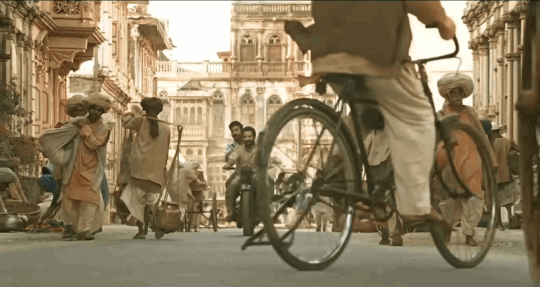



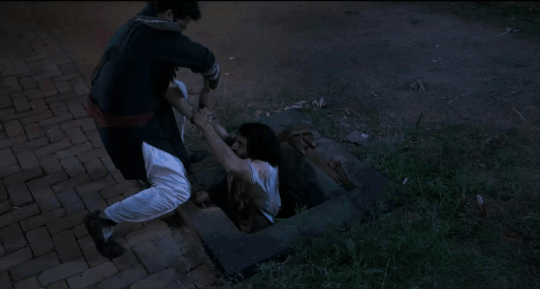


Queerness in Indian Media
↳Film: RRR (2022, Telugu), dir. S.S. RAJAMOULI
RRR is a historical fantasy action drama that follows Bheem (NTR Jr), a Gond warrior who is in search of a Gond girl who was taken away from their home, and Ram (Ram Charan), the British Army officer assigned to catch him. Ram and Bheem meet under false identities and quickly grow closer, but everything is thrown into chaos once the truth is revealed and Ram is forced to choose between his ambitions and his attachment to Bheem.
Long before any white person had ever heard of RRR, queer Indians were cautiously optimistic that there would be something for us in this movie. There was the song Dosti, which felt more romantic than the average song about friendship; Bheem's intense declaration toward Ram in the trailer; Rajamouli explaining that there is no boy-girl romantic song (a staple of masala Indian cinema in any language) because "the romance angle is between these two guys only...bromance...they are the heroes, they are the hero and heroine, and they are the hero and villain"; the lead actors repeatedly questioning interviewers who referred to Jenny and Seetha as Bheem and Ram's love interests; and the writer, V. Vijayendra Prasad, being a huge fan of Salim-Javed movies, particularly Sholay, whose homosocial pairing has been read as queer by queer Indians for decades.
The movie itself gave us more than we could have hoped for from a project made on such a huge scale. Ram and Bheem mimic many of the "hero and heroine" pairings in so many masala movies, doing everything from the "slow-mo staring" for the first meeting, to getting a whole montage song for the progression of their bond, to dressing each other up, to dancing together at a party, to carrying each other, to rescuing each other.
The final rescue scene is perhaps the most telling, as it twists a well-known myth from the Ramayana by putting Ram and Bheem in the position of heroine and hero. It is not Hanuman who tells Rama where to find Sita in Lanka, but instead Seetha who tells Bheem where to find Ram. Bheem, upon finding him, promises to get him out 'even if [he has] to burn this Lanka down to do it'--then promptly carries him on his shoulders the way Hanuman carried Rama, to do away with any suspicions from homophobic audiences.
Those homophobic audiences still made their complaints--a glance at the oldest comments on any clip or behind the scenes video for RRR will make that clear--but they were drowned out by the many fans of the movie. Ultimately, like with any coded movie, the interpretation is up to the individual, but it is undeniable that a number of queer Indians felt that there was a romantic bond between Ram and Bheem. To dismiss that would do a disservice to the many queer people who have, are, and always will work quietly behind the scenes to write our stories, even if they can never say so directly.
#rrr#tollywood#rambheem#this was the hardest post to make simply bc every time I talk about rrr I feel very#'this article contains excessive information' dot wikipedia warning.#thank you to my beloved ivy who has heard all my Excessive Information. ur a real one.#anyway I really had to restrain myself with this one and still it is the longest post for this series. rip.#anyway. wanted to do this one before pride month ends and before I take a break from this series#to make other gifs for a while bc quite frankly these take a long time to put together and I need. a break.#queerness in indian media#long post
682 notes
·
View notes
Text
50 books on the topic of eating disorders, along with brief synopses:
**Fiction:**
1. **"Wintergirls" by Laurie Halse Anderson:** A young adult novel that delves into the struggles of two friends battling anorexia and the impact on their lives.
2. **"The Best Little Girl in the World" by Steven Levenkron:** A novel that explores the life of a teenage girl as she grapples with anorexia.
3. **"Paperweight" by Meg Haston:** A young adult novel about a girl's experience in a residential treatment center for her eating disorder.
More after the jump
4. **"Hunger Point" by Jillian Medoff:** A novel that delves into the complex relationship between two sisters dealing with eating disorders.
5. **"Second Star to the Right" by Deborah Hautzig:** This novel offers a fictionalized account of a teenage girl's struggle with anorexia and her journey toward recovery.
6. **"Skinny" by Ibi Kaslik:** A novel that explores the intricate relationship between two sisters, one of whom is struggling with an eating disorder.
**Nonfiction with a Narrative Focus:**
7. **"Eating Disorders: Quiet No More" edited by Andrea C. and Harold C. Urschel:** A collection of personal essays and narratives that provide real-life perspectives on living with and recovering from eating disorders.
8. **"Brave Girl Eating: A Family's Struggle with Anorexia" by Harriet Brown:** A memoir that offers a mother's perspective on her daughter's battle with anorexia and their family's journey to support her recovery.
9. **"Eating with Your Anorexic: A Mother's Memoir" by Laura Collins:** A mother's personal account of her daughter's struggle with anorexia and their family's efforts to help her heal.
10. **"Sick Enough: A Guide to the Medical Complications of Eating Disorders" by Jennifer L. Gaudiani:** While it has a medical focus, this book includes patient narratives and real-life cases, providing a holistic view of eating disorders.
11. **"Unbearable Lightness: A Story of Loss and Gain" by Portia de Rossi:** A memoir by actress Portia de Rossi that offers a personal account of her battle with anorexia and her path to recovery.
12. **"The Rules of Inheritance" by Claire Bidwell Smith:** A memoir primarily about grief but also delves into the author's struggles with an eating disorder and how it intersected with her mourning process.
13. **"Being Ana: A Memoir of Anorexia Nervosa" by Shani Raviv:** A memoir that chronicles the author's battle with anorexia and her journey toward healing.
**Additional Nonfiction:**
14. **"Wasted: A Memoir of Anorexia and Bulimia" by Marya Hornbacher:** A deeply personal memoir that explores the author's struggles with anorexia and bulimia.
15. **"Eating in the Light of the Moon: How Women Can Transform Their Relationship with Food Through Myths, Metaphors, and Storytelling" by Anita Johnston:** This book explores the psychological and cultural aspects of eating disorders through the use of myths and metaphors.
16. **"Brain over Binge: Why I Was Bulimic, Why Conventional Therapy Didn't Work, and How I Recovered for Good" by Kathryn Hansen:** The author shares her journey of overcoming bulimia through a unique approach that challenges traditional therapy methods.
17. **"Life Without Ed: How One Woman Declared Independence from Her Eating Disorder and How You Can Too" by Jenni Schaefer:** This book blends personal narrative with practical advice on overcoming an eating disorder, personifying the eating disorder as "Ed."
18. **"Eating Disorders: The Journey to Recovery Workbook" by Laura J. Goodman and Mona Villapiano:** A practical workbook designed to guide individuals through the recovery process from eating disorders.
19. **"Eating Disorders: Anatomy of a Social Epidemic" by Tom W. Smith:** A sociological perspective on eating disorders, exploring the societal factors contributing to their prevalence.
20. **"Gaining: The Truth About Life After Eating Disorders" by Aimee Liu:** This memoir explores the author's experience with anorexia and her journey to recovery.
21. **"Fasting Girls: The History of Anorexia Nervosa" by Joan Jacobs Brumberg:** A historical examination of anorexia nervosa and its evolution in society.
22. **"Hunger: A Memoir of (My) Body" by Roxane Gay:** This memoir discusses the author's relationship with her body and explores themes of hunger and desire.
23. **"Eating Disorders in Males: A Clinical Guide" by Arnold E. Andersen and Leigh Cohn:** A comprehensive guide that focuses on eating disorders in males, providing insights into diagnosis and treatment.
24. **"The Hungry Self: Women, Eating, and Identity" by Kim Chernin:** A psychological exploration of women's relationships with food and eating as a means of self-identity.
25. **"Empty: A Memoir" by Susan Burton:** A memoir that delves into the author's experience with anorexia and her journey to recovery.
26. **"Eating Disorders and the Brain" edited by Bryan Lask and Ian Frampton:** A scientific examination of the neurological aspects of eating disorders and their impact on the brain.
27. **"Decoding Anorexia: How Breakthroughs in Science Offer Hope for Eating Disorders" by Carrie Arnold:** This book delves into the scientific understanding of anorexia and potential breakthroughs in treatment.
28. **"Hope, Help, and Healing for Eating Disorders: A New Approach to Treating Anorexia, Bulimia, and Overeating" by Gregory L. Jantz Ph.D. and Ann McMurray:** A guide that explores a holistic approach to treating eating disorders, including emotional, physical, and spiritual aspects.
29. **"The Adonis Complex: The Secret Crisis of Male Body Obsession" by Harrison G. Pope Jr., Katharine A. Phillips, and Roberto Olivardia:** An examination of body image issues in men and the development of muscle dysmorphia.
30. **"Eating Disorders: A Parents' Guide" by Rachel Bryant-Waugh and Bryan Lask:** A resource for parents and caregivers to understand, recognize, and support their children dealing with eating disorders.
31. **"Bulimics on Bulimia" edited by Maria Stavrou and Jane B. L. Howell:** A collection of personal accounts and narratives from individuals who have experienced bulimia.
32. **"Overcoming Binge Eating" by Christopher G. Fairburn:** A guide to understanding and addressing binge eating disorder, featuring strategies for recovery.
33. **"The Secret Language of Eating Disorders: How You Can Understand and Work to Cure Anorexia and Bulimia" by Peggy Claude-Pierre:** A book that discusses the author's approach to treating eating disorders and includes personal narratives from patients.
34. **"Eating Disorders and Obesity: A Counselor's Guide to Treatment and Prevention" by Laura H. Choate:** A resource for counselors and therapists to address eating disorders and obesity in clients.
**35. "Help Your Teenager Beat an Eating Disorder" by James Lock and Daniel Le Grange:** A guide specifically aimed at parents to help them understand, support, and guide their teenagers through the recovery process.
**36. "Eating Disorders: A Patient-Centered Approach" by June Alexander and Daniel Le Grange:** This book takes a patient-centered approach to understanding and treating eating disorders, featuring personal stories from individuals who have experienced them.
**37. "Life Beyond Your Eating Disorder: Reclaim Yourself, Regain Your Health, Recover for Good" by Johanna S. Kandel:** A guide that combines the author's personal experience with practical advice for overcoming eating disorders and embracing recovery.
**38. "Binge No More: Your Guide to Overcoming Disordered Eating" by Joyce D. Nash:** A self-help book that provides strategies and insights for overcoming binge eating and disordered eating.
**39. "The Secret Life of Fat: The Science Behind the Body's Least Understood Organ and What It Means for You" by Sylvia Tara:** While not solely focused on eating disorders, this book explores the science of fat and its role in health and wellness.
**40. "Why She Feels Fat: Understanding Your Loved One's Eating Disorder and How You Can Help" by Johanna S. Kandel:** A guide for family members and loved ones to understand and support someone with an eating disorder.
**41. "Eating Disorders: Personal Experiences" edited by Allison Stark Draper and Nancy D. Worrell:** A collection of essays and narratives from individuals who have experienced eating disorders, providing diverse perspectives.
**42. "My Kid Is Back: Empowering Parents to Beat Anorexia Nervosa" by June Alexander and Daniel Le Grange:** A guide for parents to support their children in overcoming anorexia nervosa.
**43. "Body Wars: Making Peace with Women's Bodies (An Activist's Guide)" by Margo Maine:** This book explores the societal pressures and activism surrounding women's body image and eating disorders.
**44. "Eating Disorders: The Facts" by Suzanne Abraham and Derek Llewellyn-Jones:** A concise and informative guide that provides facts and insights about eating disorders.
**45. "The Eating Disorders Sourcebook: A Comprehensive Guide to the Causes, Treatments, and Prevention of Eating Disorders" by Carolyn Costin and Gwen Schubert Grabb:** This comprehensive guide offers insights into the causes, treatments, and prevention of eating disorders.
**46. "Perfect Girls, Starving Daughters: The Frightening New Normalcy of Hating Your Body" by Courtney E. Martin:** An exploration of body image issues and eating disorders in the context of contemporary culture.
**47. "Eating Disorders and Obesity: How Drugs Can Help" edited by W. Kaye and H. A. Wadden:** This book explores the role of medications in the treatment of eating disorders and obesity.
**48. "Eating Disorders: A Question and Answer Book" by Ruth L. Burke and Cary L. Mariash:** A question-and-answer format book that provides information and insights into eating disorders.
**49. "The Binge Eating and Compulsive Overeating Workbook: An Integrated Approach to Overcoming Disordered Eating" by Carolyn Coker Ross:** A workbook that offers exercises and strategies for individuals dealing with binge eating and compulsive overeating.
**50. "Feeding the Fame: Celebrities Tell Their Real-Life Stories of Eating Disorders and Recovery" edited by Gary Stromberg and Jane Merrill:** A collection of personal stories from celebrities who have experienced eating disorders, shedding light on the challenges and recovery process.
These books cover a wide range of perspectives on eating disorders, from personal narratives to scientific insights.
#tw#boxofvanishingsenses#weightloss#weight loss#ana help#ed not sheeren#tw ed things#edblrr#pr0 ed#please leave me alone
35 notes
·
View notes
Text
Episode 11 of The Wyrd Side, Jenny Greenteeth, is now live!
In the final episode of the season, Aiden and Katherine discuss their experiences in the river and a potential encounter with Jenny Greenteeth. Aiden faces his past.
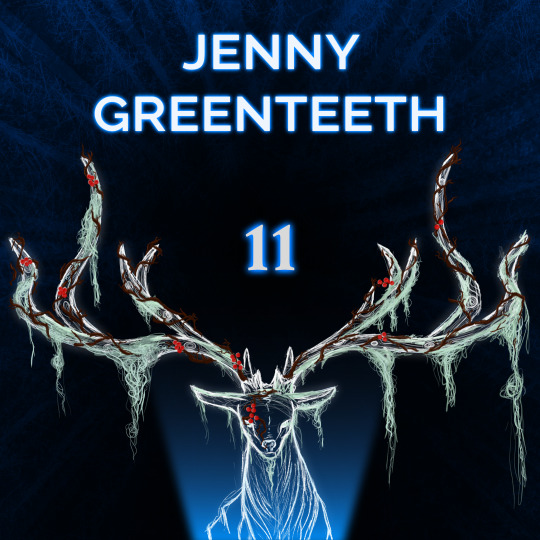
The Wyrd Side is a New Weird / Folk Horror podcast that follows the paranormal investigations of Aiden Summers and Katherine Moore as they uncover the dangerous truth lurking behind the myths and legends of the British Isles.
Apple Podcasts | Spotify | RSS Feed
#audio drama#podcast#folk horror#audiodrama#podcasts#horror#new weird#spotify#audio fiction#haunted shropshire
10 notes
·
View notes
Text
The Sunnydale Herald Newsletter, Wednesday, August 23rd
BUFFY: Yeah, well love isn't logical, Riley. It's not like you can be Mister Joe Sensible about it all the time.
BUFFY: God knows I haven't been.
RILEY: I'm not talking about you.
~~New Moon Rising~~
[Drabbles & Short Fiction]

Winning by badly_knitted (Willow, Buffy, PG)

Solace by veronyxk84 (Buffy/Spike, PG-13)

Buffy at Chilton by mmooch (Gilmore Girls crossover, Buffy, T)

bait by ausfortheheart (angelus x female!reader, not rated but see the warnings in the header)
[Chaptered Fiction]

Old Fashioned Romance - Chapter 1 by calikocat (Captain America crossover, Xander, ensemble, T)

Colonial Bride, Ch. 15 by Feanix88 (Buffy/Spike, Adult Only)
Anything We Want, Part 2, Ch. 11 by scratchmeout (Buffy/Spike, NC-17)
Keepsakes, Ch. 50 by violettathepiratequeen (Buffy/Spike, PG-13)
The Truth Shall Set You Free, Ch. 16-17 by Geliot99 (Buffy/Spike, R)
The Plunge, Ch. 17 by Harlow Turner (Buffy/Spike, PG-13)
When paths cross, Ch. 2 by To Be Hers (Buffy/Spike, G)
The Woods, Revisited, Ch. 1-3 (COMPLETE!) by Lonely Vampire (Buffy/Spike, R)

It Started in Oxnard - How it All Began by redjacobson (multiple crossovers, Xander/Tara/Harmony/Cordelia/Drusilla/Jenny C/Susie/Daria/Ellen, NC-17)

Anything We Want, Part 2, Ch. 11 by scratchmeout (Buffy/Spike, NC-17)
Keepsakes, Ch. 50 by violettathepiratequeen (Buffy/Spike, PG-13)
where the shadow ends, Ch. 10 by disco-tea (Buffy/Spike, R)
[Images, Audio & Video]

Gifs: Paint the Town Red by andremichaux (Faith, probably worksafe, there's a gun)
Artwork: Giles and an OC by mavlotov (worksafe)
Painting: They are so problematic fr by keelifallen (Buffy/Spike, worksafe)
Artwork: Cringefail trash man by keelifallen (Spike, worksafe, includes Nikki Wood's death scene)

Drawing: Angelus by lonelyhedgehoh (worksafe)

Manips: Spike, Is That You? See Our Favorite Buffy Vampire in Fan Favorite Films and TV Shows by Steph and Diana Franco (Spike, worksafe)
Vidlet: I'm Just Ken by aworldwithoutshrimp (Spike, worksafe)
[Reviews & Recaps]

continuing my btvs semi-liveblog by eldritchwyrm (from "The Harsh Light of Day" to "The Initiative")
The Initiative, Pangs, Something Blue, Hush by eldritchwyrm
Book rec: Big Bad by Lily Anderson recommended by childlikegoblinqueen
Reptile Boy by jvstheworld

The great monologues by joe_moreland_
Eliza Dushku was a better "Buffy in Faith's body" than SMG was "Faith in Buffy's body." by ejchristian86

Episode 104: The Body – Myth Taken: A Buffy the Vampire Slayer Podcast
Episode 36: Homecoming by Gym Was Cancelled: A Buffy Podcast
[Community Announcements]

Details about the upcoming Spooky September event at Sunnydale After Dark
[Fandom Discussions]

Thinking about the soul canon again by evilwickedme
Xander’s position in the episode ‘Into The Woods’ by girl4music
[Bangel] they’re FASCINATING. y’all just think the show doesn’t know... by jenny-calendar
A sequel series idea by kidtectonic

Recast Buffy The Vampire Slayer Cast hosted by Khalesssi_Slayer1

Pop Culture Role Call: You Said What?!
Submit a link to be included in the newsletter!
Join the editor team :)
3 notes
·
View notes
Text
Free Gaymila//A Brief History of Voguing
With Camila practicing her Voguing

My dear friend @emisonme told me the meaning of the Voguing, that dancing Camila has been doing lately. And here is the story
A Brief History of Voguing
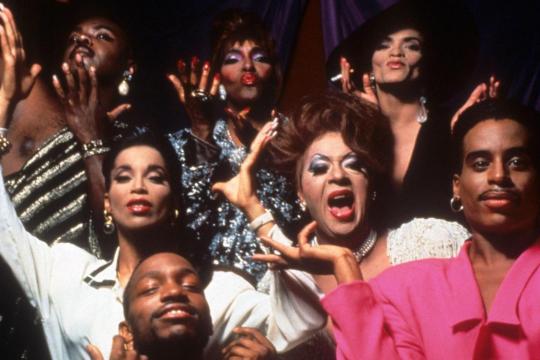
There is a dangerous myth that queer life did not exist in a public way until the 1960’s – the assumption being that LGBTQ (Lesbian, Gay, Bisexual, Transgender, Queer) identified people were “closeted” in isolation and invisibility. This could not be further from the truth. Historical scholarship has unearthed a world of saloons, cabarets, speakeasies, rent parties, and drag balls that existed since the late 1800’s as spaces where LGBTQ identities were not only visible, but openly celebrated. Some of the most influential residential enclaves for these communities were in New York, one of the most notable being Harlem.
Richard Bruce Nugent, Tom Wirth, Wikimedia Commons.
At the beginning of the twentieth century, a distinctly black LGBTQ culture took shape in Harlem. The Harlem Renaissance (1920-1935) was particularly influential to this process. The intellectual, cultural and artistic movement took the neighborhood by storm, bringing with it a flurry of literature, art, and music that centered black life. Many of the movement’s leaders were openly gay or identified as having nuanced sexualities including Angelina Weld Grimké, Claude McKay, Langston Hughes, Wallace Thurman, Alice Dunbar-Nelson, Alain Locke, and Richard Bruce Nugent among others. The movement offered a new language that challenged social structures and demonstrated the ways that race, gender, sex and sexuality distinctions were actually intersecting, fluid and constantly evolving.
Over the years, Harlem continued to be a vibrant site of LGBTQ art, activism and culture. So it should come as no surprise that Harlem was the birthplace of “vogue”, a highly stylized form of dance created by black and Latino LGBTQ communities. Between the 1960’s and 80’s New York drag competitions known as “balls” transformed from elaborate pageantry to “vogue” battles. As part of this ballroom culture, black and Latino voguers would compete for trophies and the reputation of their “Houses” – groups that were part competitive affiliation, part surrogate family. Named after the famous fashion magazine, vogue took from the poses in high fashion and ancient Egyptian art, adding exaggerated hand gestures to tell a story and imitate various gender performances in categorized drag genres.
Through dance, drag queens showed how gender is a performance – they pretended to put on makeup or “beat face”, style their hair, and put on extravagant clothes. This creative performance through voguing was even used to peacefully settle disputes among rivals in an environment that assumed a degree of mutual respect and compassion. Using dance and pantomime, the voguers would “read” each other. Ultimately, the winner would be the person who “threw the best shade.”
With time, vogue changed from the “Old Way” (which emphasized hard angles and straight lines) to the “New Way” in the late 1980’s (which added elements like the catwalk, the duckwalk, spinning, bussey and enhanced hand performance). Today, New Way is characterized by more rigid movements and “clicks” or joint contortions. Vogue Fem uses similar “New Way” elements but focuses on speed, flow and stunts. Regardless of the style, voguing shows the courage of black and Latino LGBTQ communities to make an art form that goes beyond creative expression. Vogue offers a sense of identity, belonging and dignity in a world that does not fully value their lives.
The documentary Paris is Burning captures a snapshot of the history of vogue in the mid-late 1980’s. This iconic film by Jennie Livingston was a portrait of some of the most prominent voguers in New York’s ballroom scene and the challenges they faced along the lines of race, gender, class and sexuality. Although it is widely celebrated as an invaluable piece of documentary history on LGBTQ communities of color, the film remains controversial. The voguers in the film were working-class, poor and/or sex working. Some were even battling homelessness and HIV/AIDS. Yet they had to sue to be paid next to nothing for their participation in the film.
Feminists like bell hooks believe that Livingston was not critical of her position as a white filmmaker. hooks goes on to argue that without references to any subversive process that might be taking place, voguers seem to imitate the very structures that marginalize them. Other scholars maintain that the imitation used in vogue creates a black imaginative space where aesthetics and LGBTQ life can be explored in all its complexity.
These complicated issues of race, representation and appropriation in relation to vogue continue today. They are important to address in order to keep traditions that are at once black, brown and LGBTQ and debunk the myth that LGBTQ lives of color were never publicly lived.
_____
Yeah folks. the Voguing has to do with the Black and Latin LGBT community and Camila has been promoting it. I'm waiting for the day when she be free enough to be herself and talk about it freely, but in the meantime, I'm waiting for more of her practice
41 notes
·
View notes
Text
The Banshees of Inisherin: A few thoughts
A roundup of the themes which were apparent to me on my first watch.
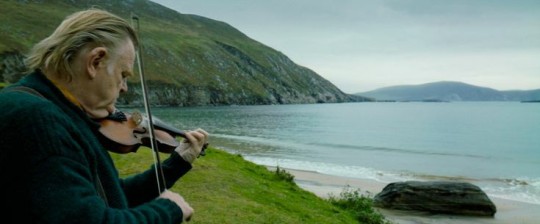
Padraic is content with his life - until he is cut off by his lifelong friend, Colm, after which he is forced to ponder the meaning of his existence and confront some uncomfortable truths about himself: he is "nice" man, but a limited person. As the villagers remark, Colm and Padraic were indeed an odd pair. While Padraic is "one of the good guys of life", Colm is a "thinker", a folk singer with an intellectual appetite and a desire to be remembered.
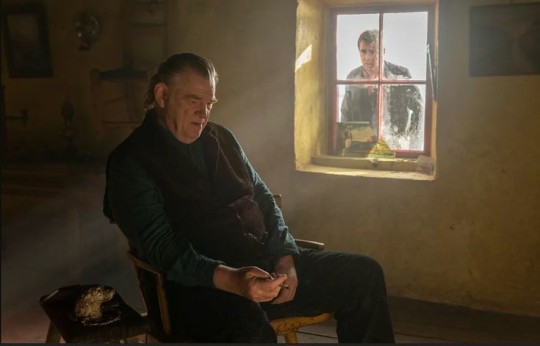
Does "niceness" leave behind a lasting legacy?
According to Colm, it doesn't. Niceness doesn't last, and that is why he has abruptly ended his friendship with Padraic. He is now dead set on leaving behind a legacy in the form of his music. He has decided to give his life a purpose.
The absurdity of finding a purpose and the pursuit of legacy
Here again McDonagh delivers a deeply cynical commentary on the purpose of one's existence. Colm's "purpose" ends his relationship with Padraic, and Padraic, for the first time, finds himself in possession of a purpose: vengeance. But this very "purpose" destroys the thing that was at the core of his character: niceness. He loses Dominic, his only other friend in the village, because of his desire for vengeance.
Existence is absurd, banshees seems to whisper. It is a bloody farce.
A bloody farce, quite literally.
What starts as a small town story soon becomes a tale of mythic rage
Colm starts chopping off his fingers at throwing them at Padraic's door every time Padraic barges into his life.
What does Colm want from Padraic?
Silence, he tells Siobhan.
Colm wants silence to be able to hear the sound of his own music.
With each finger he chops off, he's endangering his ability to play the fiddle - Colm is heavily aware of this irony, but he goes through with his plan anyway.
The message is clear - he would sooner suffer the loss of an appendage than suffer Padraic's continued presence in his life - it is a shocking declaration.
What do the fingers symbolise?
An accusation is the act of pointing fingers. So when Colm throws his severed fingers at Padraic's door, is it symbolic of an accusation?
There is yet another layer of irony here: Colm cuts off his fingers in a way to rid himself of Padraic, but henceforth every time he looks down at his hands he will be reminded of Padraic. So does he actually cherish his past memories with Padraic? Or did he simply not think his plan through?
Depression and male loneliness
But before Colm goes nuclear, before the craziness escalates, there is a time when Padraic is convinced that his friend is depressed. He discusses this in furtive whispers with his sister Siobhan, highlighting the stigma surrounding mental health at the time. When Siobhan asks Padriac whether he gets lonely, Padriac reacts as if it's an absurd notion, as if she had questioned his masculinity, once again bringing into focus the prevailing attitudes about men's mental health.
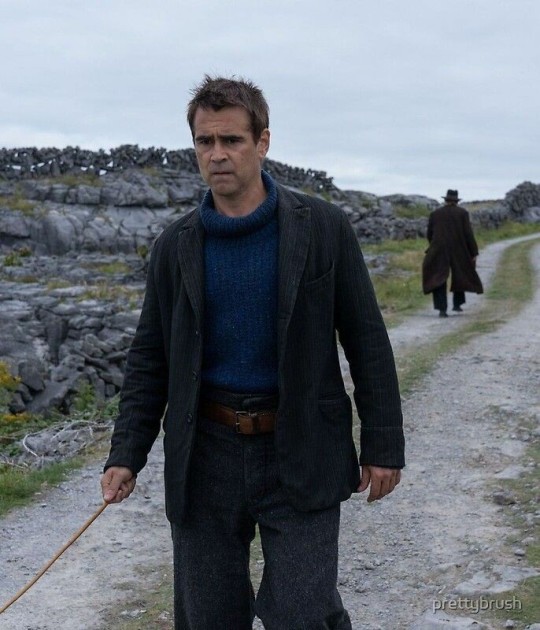
Dominic: The "Village Idiot"
It is clear that everybody thinks of Dominic as the village idiot, including Padraic and Siobhan. But over the course of the movie, we hear him make some astute observations, and as his trauma is revealed to us, we begin to understand his character better. His father, an abusive policeman, is the only truly villainous person we meet in the film.
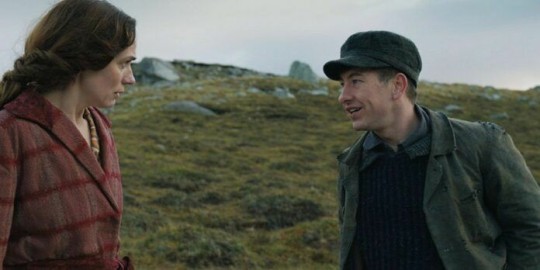
Paedar: The Policeman
What makes Banshees so interesting is its refusal to pick sides: we empathize with both Colm and Padriac and laugh at and eventually grow troubled by the increasing absurdity of their actions. In Paedar, however, we meet a character who's unanimously awful. Whether he's a symbol of something bigger (how power corrupts/the moral bankruptcy of those in power etc) or meant to be taken at face value, it works in the film because we can place people like him in real life all too easily.
Confessions
There is something myth-like about Padraic's beloved donkey Jenny choking on one of Colm's severed fingers and fueling Padraic's rage, something vaguely biblical.
When Colm confesses to the priest that he feels guilty for having indirectly caused Jenny's death, the priest replies that killing a donkey is not a sin in the eyes of God. Slapping a policeman, however, he out points to Colm, is a sin.
And perhaps that is where things started to go wrong, Colm says.
An allegory for the Irish civil war
Across the water from inisherin, the village folk hear explosions. Banshees is set in 1923, and with this added historical context, the dispute between Colm and Padraic can be viewed as the civil war in a microcosm: brothers with a shared history violently fighting each other.
The Banshee
"The Banshees of Inisherin" is the title of the tune that Colm composes over the course of the movie, and of course, the title of the movie itself. While there are no literal banshees in the movie, the "ghoulish" Mrs McCormick can be likened to one. She looms over our cast of characters like a malcontent spirit and signals the death of dominic kearney, the deaths off the coast of inisherin, and the death of Colm and Padraic's friendship.
6 notes
·
View notes
Text
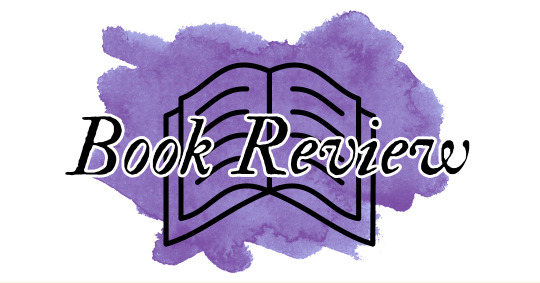
"House of Ravens"
by Jenny Sandiford
“His hands were shaking , and he looked down at them as if they weren’t his own and wondered why the hell the gods had decided now was the time to reveal this new ‘gift,’ which certainly seemed more like a curse or punishment...”
J. Sandiford

The world of "The Shadow Atlas" grows ever deeper in Jenny Sandiford's newest novella, "House of Ravens".
At the cusp of 16, Torin Dumont wants to find peace; an eye for an eye to set the scales right again. Maybe then his ghosts will find peace and his father will wake from his grief. But, now grappling with magic no mortal, much less a teenager should possess, Torin must decide if justice is blind or if the truth can be sought from the shadows.
Not all gifts are blessings; some cost the soul as they would as a curse.
Whether you have followed "The Shadow Atlas" series from its start or are just now joining the adventure with this prequel, Sandiford has created an immersive book full of magic, mystery, and gods that is easy to pick up and even easier to consume. Within moments, you will be wrapped up in Torin's life, feeling his moments of triumph and loss as acutely as you do your own. The depth of his character and past is fascinating and I'm waiting to pick up my copy of "Initiate" to continue following his story.
If you believe in hidden magic and worlds of adventure and intrigue within our own, you are sure to enjoy this book. You will feel like a teenager again, getting wrapped up in a good book and refusing to put it down until the sun comes up. So find your House of Magic and the magic locked away inside you before the myths become reality and the end draws nearer. The Shadow Atlas is waiting.
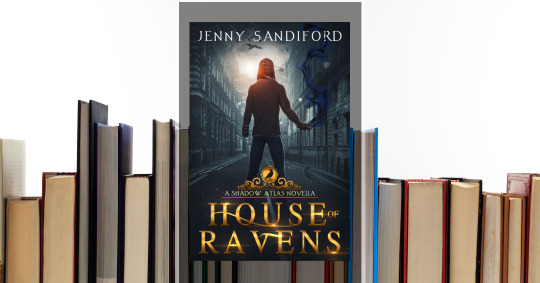
Title: "House of Ravens"
Author: Jenny Sandiford
Genre: Urban Fantasy
Release: 14 Feb. 2024
Rating: 5 stars
Warning: Young Adult
1 note
·
View note
Text
Sirens are known for many things, their beautiful songs and appearances, their tendencies to lure ships and sailors to their death, and how they eat people. While some of these myths are true, some are half truths. Sure we love our songs and take care of our appearances, but the only times we devour people and lure them to their death is when the person in question is horrible. Many of my sisters prefer to tear pirates and slavers limb from limb, others like to bite into and rip chunks from their prey, and then there are those of us that like to watch our victims drown.
We don’t really go after the innocent, only those with corrupt and blackened hearts. I personally have my own preferences when it comes to dealing with people. I prefer sacrifices being given to me, or someone willingly taking my hand to join me in the waters. When it comes to sacrifices, its a supposed promise to NOT sink their ship if they offer me up something nice, I do however still kill them for trying to bribe me. When it comes to a person taking my hand and swimming with me, I prefer to show them the beauties beneath the waters, to show them what life is like down here. Not all are willing to stay with me, but I can at times be persuasive and help them realise they want and need me.
Listen, I have desires, wants and needs too! Sure our voices hypnotise and can even make a person do something they don’t want to, but we still have needs to be met. I prefer things consensual, and my partners are obedient, soft, and submissive. I do not deny the fact that I have broken my fair share of people who thought they could dominate me, but if they didn’t want me to constantly nearly kill them with drowning, then they’d be obedient and let me do what I want. Yes I get off on drowning those brats and I enjoy seeing them finally give up, its just the most delicious pleasure I have ever experienced.
We can actually go on land… but the issue is how obvious we are so it really isn’t worth it. The coral is our home in the deep and its quite nice, especially our soft and squishy beds that close us off to the outside world. My own home is a lovely bundle of colours, some greens, pinks, yellows and oranges. Oh! I can’t forget about Jenny, she’s such a cuddly shark and enjoys my little affections. Very protective however and may have bitten a human in half during one of our outings. Simple rule to avoid being eaten is don’t touch me without permission, and don’t have ill will towards my life. Like seriously, I'm a person too.
If you’re wondering who I am, just call me Siren. My people don’t give out our names except to those we’re extremely close with, like Jenny the shark. If you somehow earned my name, congratulations are in order since the only people that have learned my name are previous mortal lovers who are now dead. Until death do we part as I live unto eternity. Sirens don’t age like humans, in fact its pretty accurate to say we don’t age. I should also mention that we aren’t mermaids, those are entirely different aquatic people who we enjoy some communication and trade with. They also don’t eat people.
#kidnap fantasy#siren#siren girl#tw trafficking#cannibalistic#non con#dub con#writing#dream#my thoughts
0 notes
Text
With the rain ending Asher lead Robin...or well Robin lead Asher back to his house where Anubis opened the door for them. Asher smiled and hugged Anubis getting a small shock from the god. “I know, I know...I need to visit more.” Robin looked at his mom, then Asher and Anubis.
“Mom...” Robin walked up to stand face to face with his mom, looking at Colette. “I am leaving with Anubis and Colette.” His mom’s eyes got wide, Jenny couldn’t respond at first.
“W-what...w-why? T-they...” She stammered and choked.
“They were so open to me, so straight forward. You lied, you lived in fear. I know you have a pistol at your bedside. I am not a monster...just different, like Asher and Colette.” He didn’t even hug her, but turned to Anubis and then Colette.
@redemptioninchaos
#The weights tell all [Anubis; God of the Underworld]#Young and happy [Asher]#History and Magic [Robin]#Myths and Truths [Jenny]
30 notes
·
View notes
Text
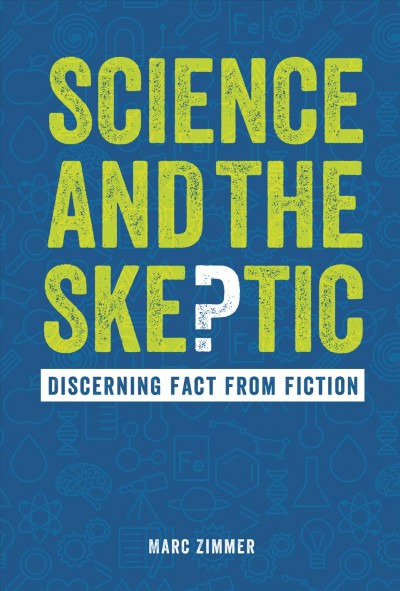
Reluctant Reader Wednesday: Science and the Skeptic: Discerning Fact From Fiction by Marc Zimmer
This slim volume contains a lot of important information that will make teens think more carefully about the world around them, what they see on social media, and what they hear and read from different news sources. This book explores many different topics that have been subject to disinformation campaigns over the years, like cigarettes, vaccines, and climate change. Other topics include predatory vs. peer-reviewed journals, Dr. Oz, Jenny McCarthy, COVID-19, and clickbait. Chapters include “Fake Science” and “This is Science, Not Politics.” There’s also a list of rules to help readers distinguish between accurate science and misinformation, as well as resources like books and fact-checking websites.
Give this book to teens and even grownups who are ready for an eye-opening look at science, pseudoscience, and stories that are ripped from the headlines.
BTW, if you're like me, you probably just thought ... fact-checking websites? THOSE could be helpful! So, here is the list of sites that were recommended.
Have fun falling down the rabbit hole of facts vs. fiction!
Beall's List of Potential Predatory Journals and Publishers
FactCheck.org
PolitiFact
Snopes
Truth or Fiction
1 note
·
View note
Note
When is the campaign against Big Skies?
https://www.digitalspy.com/tv/a34795822/big-sky-abc-controversy-backlash/
Wow, thanks for this info, Anon. I'd never heard of this show until this morning since people are now talking about Jensen Ackles being a guest star, so this is obviously all very new to me.
Let me put together a little post about this for people here and now.
Big Sky was and is criticized by Indigenous groups for its cultural insensitivity, because the inspiration for its plot is rooted in a largely-silenced epidemic against Indigenous women and girls specifically. However, the show whitewashes this rather than using it as a teachable moment. The concerns Indigenous groups sent to ABC were not sufficiently addressed.
Clickable link for the URL Anon sent above.
So, here's what Big Sky is about: it's "a series about private detectives Cassie Dewell and Cody Hoyt, who join forces with Cody's estranged wife and ex-cop, Jenny Hoyt, to search for two sisters who have been kidnapped by a truck driver on a remote highway in Montana."
In November 2020, even before the show aired, Indigenous groups and leaders spoke out against the premise of this show. Their overall critique is that the story erases the real-life tragedy of the Murdered and Missing Indigenous Women and Girls (MMIWG), who are disproportionately murdered and abducted, particularly in Montana. These Indigenous groups were also behind the documentary Somebody’s Daughter, which is specifically about this crisis.
Here's part of their initial open letter to ABC:
"We write with serious concerns of at best, cultural insensitivity, and at worst, appropriation, in respect to the soon- to-be premiered series, Big Sky. We understand that the plot of Big Sky is based on C. J. Box’s novel The Highway. Unfortunately, neither Big Sky nor The Highway address the fact that the disproportionate majority of missing and murdered women in Montana are Indigenous, a situation replicated across Indian Country, which has made this tragedy an existential threat to Native Americans. To ignore this fact, and to portray this devastation with a white female face, is the height of cultural insensitivity, made even more egregious given the national awakening to the need for racial justice."
Season one was filmed in Vancouver, in the Lower Mainland of British Columbia, West Canada. (Later seasons have since been filmed in New Mexicon.) British Columbia is also the area where "the Highway of Tears" is located–as pointed out by Melissa Moses, a representative for the Union of British Columbia Indian Chiefs (UBCIC), in the article sent by Anon. Highway 16 is called as such because so many women and girls, most of whom are Indigenous, have been murdered or abducted from that stretch of road. The plot of Big Sky echoes this, but makes no sufficient mention of it either in the show or as a PSA connected to the show to use it as a teaching/awareness moment.
The subpar response in December 2020 from the producers in response to the open letter was as follows:
“After meaningful conversations with representatives of the Indigenous community, our eyes have been opened to the outsized number of Native American and Indigenous women who go missing and are murdered each year, a sad and shocking fact. We are grateful for this education and are working with Indigenous groups to help bring attention to this important issue."
However, Tom Rodgers, president of the Global Indigenous Council, stated that he knew of no Indigenous organization working with ABC to rectify the problems. “So we’re interested in learning who ABC is working with, since it is curious that no purported Indigenous partners are named in its statement. In our culture, trust can only be earned, not promised.”
An organized campaign was then mounted by Indigenous groups in early 2021 in regards to this show. Their demands sent to ABC:
“I’m not in the entertainment business. We are not asking them to cancel the show, to put people out of work, no. There is no client here but justice. We want them to tell the truth, not myth making but the true historically accurate Native American story,” Rogers said.
The list of demands presented to Kelley, ABC and its parent company Disney include a credit line at the end of each episode so people can educate themselves on the issue. They are also asking for a healing fund for Native American families that have lost their daughters to sex trafficking, and that ABC broadcast “Somebody’s Daughter,” a documentary about murdered and missing Indigenous women and girls.
They want ABC to produce a public service announcement on the issue, and a meaningful contribution toward the establishment of an advocacy fund for lobbying efforts.
These demands were not adequately addressed. Apparently ABC attempted to ~remedy~ this by asking "to verify accuracy in the show's depiction of a fictional version of their tribal office and an exterior military seal." One of the scenes took place in a fictitious version of the office of the Confederated Salish and Kootenai Tribes (CSKT).
The Tribes' response:
"This is not how you connect with a sovereign nation. You haven’t offered to share the script, and you have not hired any Native filmmakers. It seems the studio that brought us the animated Pocahontas will continue to tell American Indian stories without Indigenous writers or filmmakers... Shame on you for your unacceptable behavior."
Here is a good resource to quickly educate yourself on the Missing and Murdered Indigenous Women (MMIW) crisis.
I understand that everyone's excited to see Jensen in a new role, albeit a small one. But if you've not been watching this show previously, based on the sound of this, it's a good idea to not start watching and avoid getting invested so you avoid giving it excessive support. You can look up Jensen's clips if you're interested, enjoy the GIFs, or find an alternative way to watch that episode specifically without contributing to ABC's official streaming numbers, without using Big Sky's hashtags or key words on social media to increase their interest numbers, etc. Be cognizant of this, please.
Consider donating to the nonprofit organization Native Hope–even a very small amount–to help the Indigenous people this affects.
Please also share this post to spread awareness, especially if you're going to be talking about Jensen's scenes in this show.
Thank you so much Anon for bringing this to my attention! I’ve shared this on Twitter as well over at @CharCubed. Everyone feel free to share this post wherever.
All information and quotes in this post are taken from the articles linked throughout, so it should be pretty solid. But if I've misrepresented anything about this Indigenous issue or about Indigenous culture, someone please let me know.
#big sky#ABC big sky#Beau Arlen#missing and murdered indigenous women#MMIW#indigenous people#indigenous rights
133 notes
·
View notes
Text
A radical feminist’s reading list-
Classic
The Second Sex by Simone de Beauvoir
The Feminine Mystique by Betty Friedan
Sexual Politics by Kate Millett
On Lies, Secrets, and Silence: Selected Prose, 1966-1978 by Adrienne Rich
The Beauty Myth by Naomi Wolf
Fiction
The Power by Naomi Alderman
Salt Slow by Julia Armfield
The Handmaid’s Tale by Margaret Atwood
Native Tongue by Suzette Haden Elgin
The Vagina Monologues by Eve Ensler
Her Body and Other Parties by Carmen Maria Machado
The Gate to Woman’s Country by Sheri S. Tepper
History
Women’s Work: The First 20,000 Years by Elizabeth Wayland Barber
Caliban and the Witch: Women, the Body, and Primitive Accumulation by Silvia Federici
The Living Goddesses by Marija Gimbutas
The Creation of Patriarchy by Gerda Lerner
Who Cooked the Last Supper? The Women’s History of the World by Rosalind Miles
Women of Ideas: And What Men Have Done to Them by Dale Spender
Headstrong: 52 Women Who Changed Science-and the World by Rachel Swaby
Intersectional
Women, Race & Class by Angela Y. Davis
Ain’t I a Woman: Black Women and Feminism by bell hooks
It’s Not About the Burqa by Mariam Khan (editor)
Sister Outsider: Essays and Speeches by Audre Lorde
This Bridge Called My Back: Writings by Radical Women of Color by Cherríe Moraga (editor) and Gloria Anzaldúa (editor)
Lesbian
Unpacking Queer Politics: A Lesbian Feminist Perspective by Sheila Jeffreys
The Disappearing L: Erasure of Lesbian Spaces and Culture by Bonnie J. Morris
Homophobia: A Weapon of Sexism by Suzanne Pharr
Compulsory Heterosexuality and Lesbian Existence by Adrienne Rich
Liberal vs. radical
Female Erasure: What You Need to Know about Gender Politics’ War on Women, the Female Sex and Human Rights by Ruth Barrett (editor)
End of Equality by Beatrix Campbell
Feminisms: A Global History by Lucy Delap
Daring to be Bad: Radical Feminism in America, 1967-1975 by Alice Echols
Gender Hurts: A Feminist Analysis of the Politics of Transgenderism by Sheila Jeffreys
Freedom Fallacy: The Limits of Liberal Feminism by Miranda Kiraly (editor) and Meagan Tyler (editor)
The Sexual Liberals and the Attack on Feminism by Dorchen Leidholdt (editor) and Janice G. Raymond (editor)
The Transsexual Empire: The Making of the She-Male by Janice G. Raymond
We Were Feminists Once: From Riot Grrrl to CoverGirl, the Buying and Selling of a Political Movement by Andi Zeisler
Pornography, prostitution, surrogacy & rape
Against Our Will: Men, Women and Rape by Susan Brownmiller
Slavery Inc.: The Untold Story of International Sex Trafficking by Lydia Cacho
Pornland: How Porn Has Hijacked Our Sexuality by Gail Dines
Being and Being Bought: Prostitution, Surrogacy and the Split Self by Kajsa Ekis Ekman
The Industrial Vagina: The Political Economy of the Global Sex Trade by Sheila Jeffreys
Only Words by Catharine A. Mackinnon
Know My Name by Chanel Miller
Not a Choice, Not a Job: Exposing the Myths about Prostitution and the Global Sex Trade by Janice G. Raymond
Women as Wombs: Reproductive Technologies and the Battle Over Women’s Freedom by Janice G. Raymond
Psychology & trauma
Why Does He Do That? Inside the Minds of Angry and Controlling Men by Lundy Bancroft
Delusions of Gender: How Our Minds, Society and Neurosexism Create Difference by Cordelia Fine
Trauma and Recovery: The Aftermath of Violence – From Domestic Abuse to Political Terror by Judith Lewis Herman
Toward a New Psychology of Women by Jean Baker Miller
Theory
Dear Ijeawele, or A Feminist Manifesto in Fifteen Suggestions by Chimamanda Ngozi Adichie
We Should All Be Feminists by Chimamanda Ngozi Adichie
Gyn/Ecology: The Metaethics of Radical Feminism by Mary Daly
Last Days at Hot Slit: The Radical Feminism of Andrea Dworkin by Andrea Dworkin, Johanna Fateman (editor) and Amy Scholder (editor
The Dialectic of Sex: The Case for a Feminist Revolution by Shulamith Firestone
Feminism is for Everybody: Passionate Politics by bell hooks
Feminist Theory: From Margin to Center by bell hooks
Against Sadomasochism: A Radical Feminist Analysis by Robin Ruth Linden (editor), Darlene R. Pagano (editor), Diana E. H. Russell (editor) and Susan Leigh Star (editor)
Toward a Feminist Theory of the State by Catharine A. Mackinnon
The Sexual Contract by Carole Pateman
Other
Without Apology: The Abortion Struggle Now by Jenny Brown
Close to Home: A Materialist Analysis of Women’s Oppression by Christine Delphy
Doing Harm: The Truth About How Bad Medicine and Lazy Science Leave Women Dismissed, Misdiagnosed, and Sick by Maya Dusenbery
Beauty and Misogyny: Harmful Cultural Practices in the West by Sheila Jeffreys
Are Women Human? And Other International Dialogues by Catharine A. Mackinnon
Invisible Women: Data Bias in a World Designed for Men by Caroline Criado Perez
A Passion for Friends: Toward a Philosophy of Female Affection by Janice G. Raymond
How to Suppress Women’s Writing by Joanna Russ
Man Made Language by Dale Spender
Counting for Nothing: What Men Value and What Women are Worth by Marilyn Waring
#radical feminist#radical feminism#radfem#radfem safe#terf#terf safe#radfems please interact#terfs please interact#feminist literature
5K notes
·
View notes
Text
Episode 10 of The Wyrd Side, Going Home, is now live!
Aiden and Katherine travel to Shropshire, to investigate the myth of Jenny Greenteeth and Aiden’s childhood encounter.
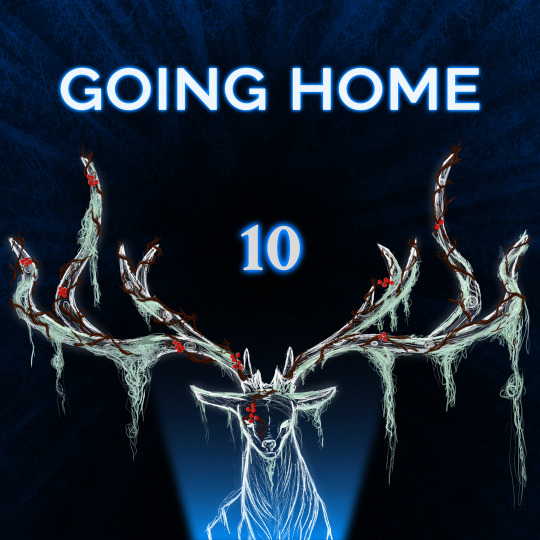
The Wyrd Side is a New Weird / Folk Horror podcast that follows the paranormal investigations of Aiden Summers and Katherine Moore as they uncover the dangerous truth lurking behind the myths and legends of the British Isles.
Apple Podcasts | Spotify | RSS Feed
#jenny greenteeth#shropshire#audio drama#podcast#folk horror#audiodrama#horror#podcasts#new weird#spotify#audio fiction#folklore
6 notes
·
View notes
Photo
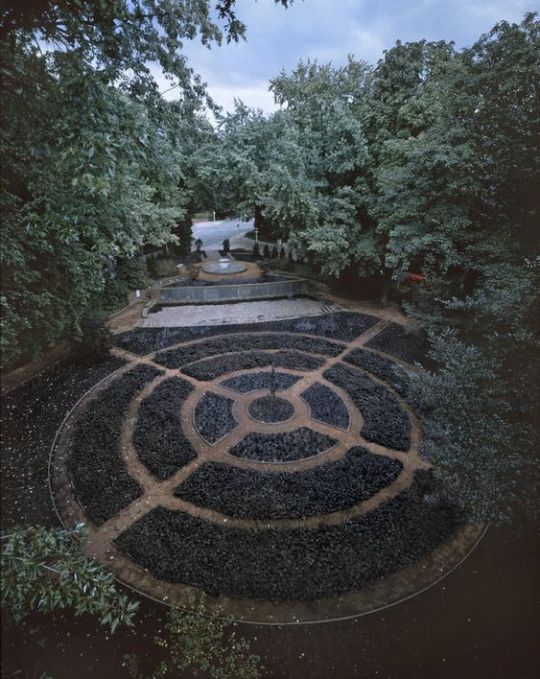
Jenny Holzer, Black Garden, 1994, permanent installation, Nordhorn, Germany.
“Unequivocality of meaning is one of the thematic
concerns of the work of the American artist Jenny Holzer. Since the
early eighties she has been known for using electronic strip advertising
to place very personal, socio-politically committed and harshly lit
messages for debate in public city places. With this project realized in
the early nineties in Nordhorn, a district town in Lower Saxony, on the
German-Dutch border, she chose a garden as her medium for the first
time. Holzer felt that electronics were too insensitive for the project’s
location. For this reason she took the risk, with expert advice from the
American landscape artist Dee Johnson and the local municipal gardener,
of designing a municipal park by the war memorial “Am Langemarckplatz,”
built there in 1929. As the “Nordhorn Monument,” this memorial was originally erected for the “gloriously fallen heroes” in the wars of 1870/71 and 1914-18. At
the centre of the slightly raised, simply designed round arrangement is a circular sandy limestone slab with the names of soldiers who were killed. On the centre of this was a cylindrical plinth with the sculpture of a naked, kneeling youth. “It is the fallen who support life,” the inscription on the plinth still reads today. But the sculpture by Hermann Scheuernstuhl, stylistically speaking a work of Neue Sachlichkeit, is missing. The National Socialists had it removed in 1933 because of its nakedness and allegedly negroid features. They made the square, which was renamed Langemarckplatz in 1938, their preferred heroic memorial in the town. The new name refers to the battle near Langemarck in Flanders, where the German army was reported to have suffered heavy losses in the First World War. According to a report by the Supreme
Command of the German Army in November 1914, young war volunteers, prepared to fight and lay down their lives, stormed and took the
enemy positions with the German national anthem on their lips. This story, deliberately made into myth and used for propaganda purposes under the Third Reich, in truth contradicted historical facts and was later revealed by historians to have been deliberate false reporting for the purpose of glorifying the war.
The town restored the memorial in 1959. The missing sculpture was replaced by a supposedly neutral bowl of fire. 23 bronze plaques in memory of the Nordhorn Second World War dead were added by the long brick retaining wall above the lower section of the park; there was also a plaque in memory of victims of political and racial persecution. But discussions about the place’s controversial history and the name of the square did not start in Nordhorn until 1986, and led to Jenny Holzer’s commission to redesign the memorial in 1989. Directly adjacent to the old, raised round memorial she created a second circular garden in the lower part of the park, placed in the middle of the clearing
between old park trees. This new garden is considerably larger than the memorial grounds and forms a kind of echo of the existing arrangement. The layout of the addition resembles a medieval monastery garden, but it is also deliberately reminiscent of a target. Concentric circular beds are separated
from each other by circular paths, and divided into twelve parts by two paths running on a cross pattern towards the central round bed. The bed edgings
in red Bentheim sandstone and the path surface in red brick chippings underline the provocative character of the garden, but they also correspond with the dark red brick walls and steps in the old memorial. Five simple sandstone benches, two in the old and three in the new area, are also shared
design features, reminiscent at first sight of the 1929 originals. But appearances are deceptive. New inscriptions in German and English provide drastic descriptions of the horrors of war and make it essentially impossible to use the benches: “It is the war zoo. It is a landmark. Pilots name it. Burned all over so only his teeth are good. He sits fused to the tank. Metal holds the blast heat and sun. The ocean washes the ead. They are face up face down in foam. Bodies roll from swells to the open in the marsh.”
In stark contrast with the shocking effect of these texts, the small Arkansas Black decorative apple tree with its black fruit in the middle of the new garden seems an almost grotesque cliche, cynical–or is it ironic? The Black Garden makes it clear how difficult it is to create an anti-monument that would not make anyone enthusiastic about war….This garden in the shade of the old park trees gets its name and its strangely melancholy atmosphere from the fact that the whole of the slightly sunken site is filled with plants with dark to black foliage and dark blossoms. Black Mondo grass, dark-leafed geranium and common bugle with dark purple leaves cover most of the beds. Copper berberis, copper beeches, and copper plums with their dark pink blossoms frame the site and create accents at certain points. One of the impressive climaxes in the flowering calendar is the blooming of hundreds of black tulips on the outer edge of the target, The artist planted white tulips only in a small bed in front of the memorial plaque for the victims of National Socialism. Theplanting is adapted and extended in consultation with Jenny Holzer yea by year.”
—From In Gardens: Profiles of Contemporary European Landscape Architecture by Udo Weilacher
#jenny holzer#black garden#garden#memorial#art#installation#site specific#black#contemporary art#war#violence#elegy
24 notes
·
View notes